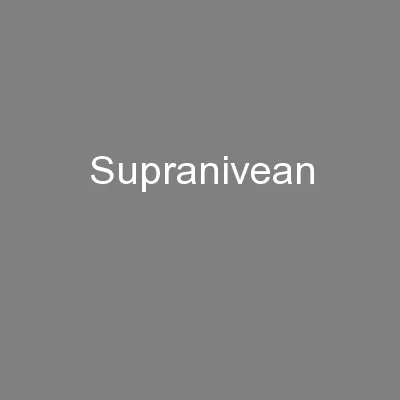

travel of snowshoe hares on Niwot Ridge Marieta Bialek EBIO 4100 Winter Ecology Spring 2012 Layout of Presentation Introduction Background Snowshoe Hare Relevance to Winter Ecology ID: 303201
Download Presentation The PPT/PDF document "Supranivean" is the property of its rightful owner. Permission is granted to download and print the materials on this web site for personal, non-commercial use only, and to display it on your personal computer provided you do not modify the materials and that you retain all copyright notices contained in the materials. By downloading content from our website, you accept the terms of this agreement.
Slide1
Supranivean travel of snowshoe hares on Niwot Ridge
Marieta BialekEBIO 4100Winter Ecology Spring 2012Slide2
Layout of Presentation Introduction
BackgroundSnowshoe Hare, Relevance to Winter Ecology, Question Hypotheses
Methods
Results
Discussion
Key ReferencesSlide3
Snowshoe Hare Lepus Americanus
of the Rocky MountainsHare populations more heterogeneous in rocky mountain regionsImportant Habitat: Lodgepole pine forests and engelmann spruce-subalpine fir forests
Threat: Climate change affecting precipitation (snow) and thus biotic communities
(Ellsworth, Reynolds 2006)Slide4
Relevance to Winter EcologyIn winter hares are main prey biomass for many predators
Consume a large amount of woody forage all winterConstantly deposit fecal pellets on the surface which eventually reach the forest floor, affecting soil nutrient contentSnow conditions (i.e., depth and density) play an important role in the types of predators that hunt hares during the winter
Thus may influence predation risk
(Ellsworth, Reynolds 2006)
Coevolution
with the lynx for snow travel – morphological adaptationsSlide5
Cont. SnowMorphological adaptation to snow: feet
Mechanism: Reduced snow loading facilitates movement over snowSlide6
QuestionDoes the top layer of snow density significantly limit the travel of snowshoe hare?
How does the stride length effect the depth of the track?How does the density of the snow effect the depth of the track?Is there a significant relationship between the density of the snow and stride length?Null Hypothesis: There is no significant relationship between stride, density of snow, and the depth of a traveling hare trackSlide7
Multiple Hypotheses and reasoningH1
The depth of the track will increase as stride increases, due to force pushing down on snow to jump furtherH2Tracks will be deeper at lower densities because at lower densities snow is harder to move throughH3
Strides will be longer at higher densities because less energy is lost to the snow and more can be used for the jumpSlide8
MethodsMaterials: flotation, snow density tools (from the snow pit kit)
Two locations: Up Niwot Ridge Road between MRS and Cable GateAround the mountain research station
Recorded measurements after fresh snowfall on two different days
Only recorded tracks of larger hares
Picked tracks between areas of forage where hare clearly has a destination, moving swiftly
For each track:
Measure stride, depth (hind feet), density of top layerSlide9Slide10
Limitations in the methodsLimitationsUncertainty how long after the snowfall the hair traveled through over snow, in which conditions could have changed
Only two days of measurements, after it snowedTime (more time, more data, greater range of densities to work with)Little variation in snow density (range 0.079 g/cm) Slide11
ResultsSlide12
Hypothesis 1
Figure 1 How length of stride affects depth of trackSlide13
Hypothesis 1
Figure 1: Plot of all tracks, depth as a function of stride
R squared = 0.07492
P-value = 0.1589
Figure 2: Only strides > 85 cm
R squared = 0.03066
P-value = 0.2808
Not significantSlide14
H2
Figure 3R Squared = 0.1201 P-value = 0.10280
Not significantSlide15
H3
Figure 4R squared = -0.05885P-value = 0.6896
Not SignificantSlide16
Discussion possible conclusions
Figure 1: Slower = shorter stride, more time to sinkData not significant, because not a significant range of densities: need more dataSlide17
Revisit Hypothesis 1
Figure 1 How length of stride affects depth of trackSlide18
ImplicationsTop layer conditions do not have a significant effect on snowshoe hare travel – they are just too well adapted
Perhaps the snow conditions are more important in how they effect supranivean predatorsSnow conditions (i.e., depth and density) play an important role in the types of predators that hunt hares during the winter. Thus may influence predation risk
(Ellsworth, Reynolds 2006)
Future study: same experiment for hare predatorsSlide19
Future ResearchOver a longer period of time,
conditions can be assessed, (amount of last snowfall (cm), type of snow (i.e. sugar snow, crust, wet melt, powder)Effect of snow conditions on snowshoe hare travel – what conditions are optimal for the snowshoe hare? Can they move faster on a solid crust than on fresh snow? (measure speed)
Studies have shown that hare travel is more efficient on snow than bare ground…Slide20
Key ReferencesAttributes of forest strips used by snowshoe hare in winter within clear-cut boreal landscapes.
Potvin, François, Normand Bertrand, Jean Ferron. 2005. Canadian Journal of Forest Research, 35:(10) 2521-2527Ecology of Snowshoe Hares in the Central Rocky Mountains. Dolbeer
, Richard, William R. Clark. 1975.
The Journal of Wildlife Management
, 39(3): 535-549
Effect of moonlight on winter activity of snowshoe hares. Gilbert, B., Stan
Boutin. 1991.
Arctic and Alpine Research,
23:(1) 61-65
-methods
The Geometry of a population cycle: a mechanistic model of snowshoe hare demography.
Kingi
, Aaron and William Schaffer. 2001.
Ecology
, 82(3): 814-830
Snowshoe Hare (
Lepus
americanus
): A technical conservation assessment. Ellsworth, Ethan and Timothy Reynolds. 2006. USDA Forest Service, Rocky Mountain Region.
Key articleSlide21
Questions?
Questions?